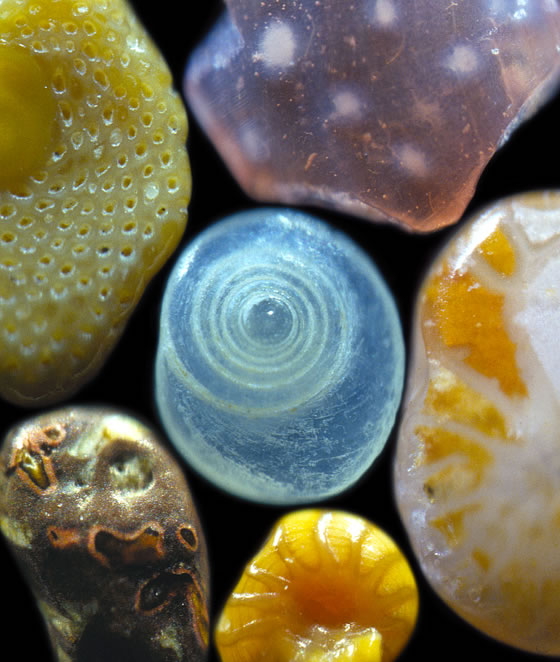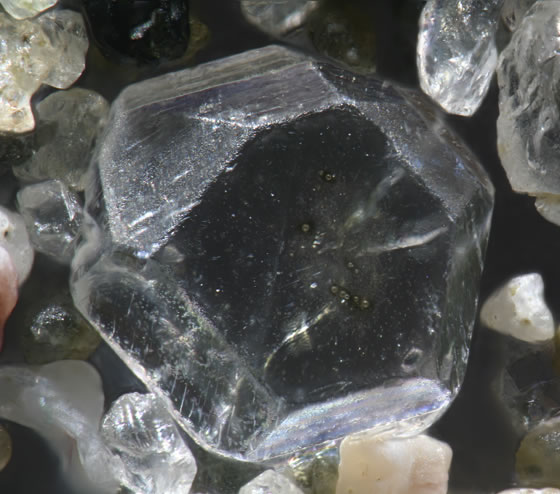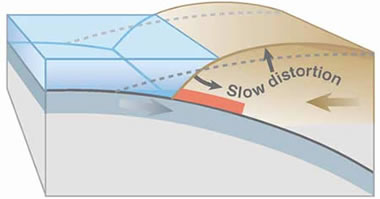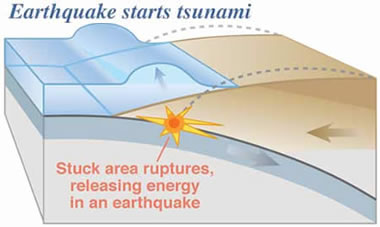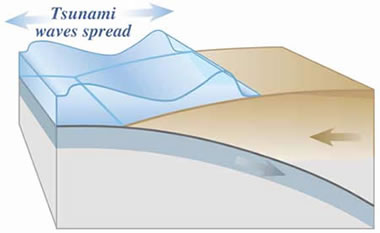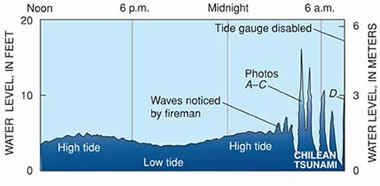A century ago, science barely knew that the Earth even has a core. Today we are tantalized by the core and its connections with the rest of the planet. Indeed, we're at the start of a golden age of core studies.
The Core's Gross Shape
We knew by the 1890s, from the Earth's response to the gravity of the Sun and Moon, that the planet has a dense core, probably iron. In 1906 Richard Dixon Oldham found that earthquake waves move through the Earth's center much slower than through the mantle around it—because the center is liquid.
In 1936 Inge Lehmann reported that something reflects seismic waves from within the core. It became clear that the core consists of a thick shell of liquid iron—the outer core—with a smaller, solid inner core at its center. It's solid because at that depth the high pressure overcomes the effect of high temperature.
In 2002 Miaki Ishii and Adam Dziewonski of Harvard University published evidence of an "innermost inner core" some 600 kilometers across. In 2008 Xiadong Song and Xinlei Sunproposed a different inner inner core about 1200 km across (here's a condensed version in scientific jargon). Not much can be made of these ideas until others confirm the work.
Whatever we learn raises new questions. The liquid iron must be the source of Earth's geomagnetic field—the geodynamo—but how does it work? Why does the geodynamo flip, switching magnetic north and south, over geologic time? What happens at the top of the core, where molten metal meets the rocky mantle? Answers began to emerge during the 1990s.
Studying the Core
Our main tool for core research has been earthquake waves, especially those from large events like the 2004 Sumatra quake. The ringing "normal modes," which make the planet pulsate with the sort of motions you see in a large soap bubble, are useful for examining large-scale deep structure.
But a big problem is nonuniqueness—any given piece of seismic evidence can be interpreted more than one way. A wave that penetrates the core also traverses the crust at least once and the mantle at least twice, so a feature in a seismogram may originate in several possible places. Many different pieces of data must be cross-checked.
The barrier of nonuniqueness faded some as we began to simulate the deep Earth in computers with realistic numbers, and as we reproduced high temperatures and pressures in the laboratory with the diamond-anvil cell. These tools have let us peer through the layers of the Earth until at last we can contemplate the core.
What the Core Is Made Of
Considering that the whole Earth on average consists of the same mixture of stuff we see elsewhere in the solar system, the core must be iron metal along with some nickel. But it's less dense than pure iron, so about 10 percent of the core must be something lighter. Sulfur and oxygen are the two best candidates, though hydrogen has also been considered. But the money is still on one of the other two, with oxygen looking slightly more probable, or maybe both.
Seismologists continue to probe the inner core. The core's eastern hemisphere appears to differ from the western hemisphere in the way the iron crystals are aligned. The problem is hard to attack because seismic waves have to go pretty much straight from an earthquake, right through the Earth's center, to a seismograph. Events and machines that happen to be lined up just right are rare. And the effects are subtle.
Core Dynamics
In 1996, Xiadong Song and Paul Richards confirmed a prediction that the inner core rotates slightly faster than the rest of the Earth. The magnetic forces of the geodynamo seem to be responsible.
Over geologic time, the inner core grows as the whole Earth cools. Iron crystals freeze out at the top of the outer core and rain onto the inner core. At the base of the outer core, the iron freezes under pressure taking much of the nickel with it. The remaining liquid iron is lighter and rises. These rising and falling motions, interacting with geomagnetic forces, stir the whole outer core at a speed of 20 kilometers a year or so.
The planet Mercury also has a large iron core and a magnetic field, though much weaker than Earth's. Recent research hints that Mercury's core is rich in sulfur and that a similar freezing process stirs it, with "iron snow" falling and sulfur-enriched liquid rising.
Core studies surged in 1996 when computer models by Gary Glatzmaier and Paul Roberts first reproduced the behavior of the geodynamo, including spontaneous reversals. Hollywood gave Glatzmaier an unexpected audience when it used his animations in the action movie The Core.
Recent high-pressure lab work by Raymond Jeanloz, Ho-Kwang (David) Mao and others has given us hints about the core-mantle boundary, where liquid iron interacts with silicate rock. The experiments show that core and mantle materials undergo strong chemical reactions. This is the region where many think mantle plumes originate, rising to form places like the Hawaiian Islands chain, Yellowstone, Iceland, and other surface features. The more we learn about the core, the closer it becomes.


